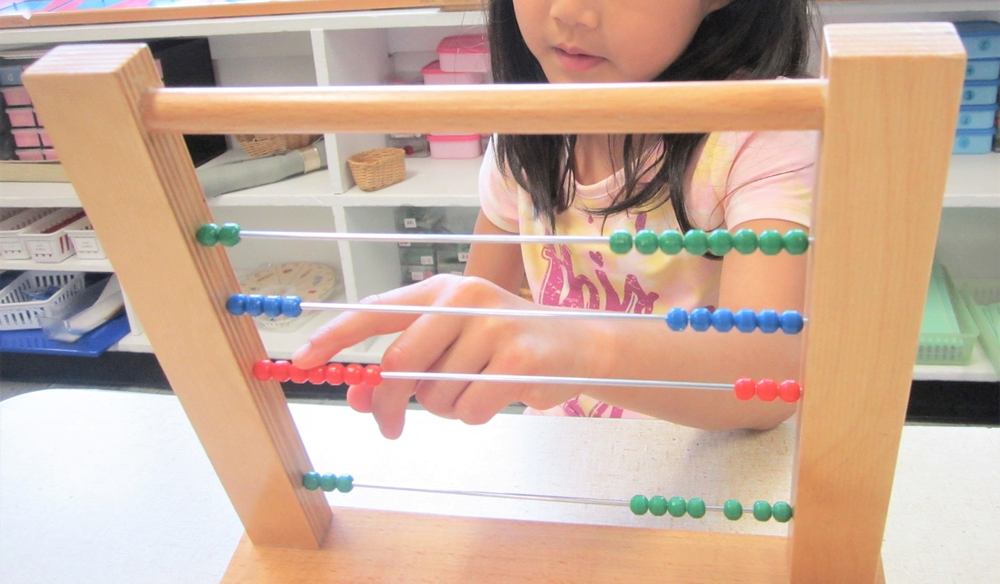
As children develop through early childhood, they are increasingly able to understand abstract ideas. This seems simple to adults, but the development of the ability to think abstractly is actually quite complex. Young children need concrete experiences with materials they can touch and manipulate in order to understand concepts deeply. Older children, though, can begin to explore abstract concepts more comfortably, although they still benefit from having manipulative materials in their hands.
The Montessori Bead Frame is a great example of a material appropriate for this stage of development, when children can think in more complex ways but still learn best with hands-on activities. The frame, which resembles an abacus, can be used to explore mathematical operations more quickly. Because units, tens, hundreds and thousands are all represented with beads on a single frame, the material is less cumbersome and easier to manage quickly than the larger Golden Bead materials. But in order for the child to distinguish between a green unit bead and a red hundred bead, he or she must already understand the concept of units and hundreds. The Golden Beads offer these concepts concretely: there are actually one hundred unit beads on a hundred square. In the Bead Frame, each of the beads is symbolic of a quantity, but it is the color of the bead that identifies its value, not its cumulative quantity.
Children ready for more advanced mathematical exercises use the Bead Frame for addition, multiplication, division and subtraction, both static and dynamic. They can manipulate very large numbers with accuracy and speed on the frame, which is, in and of itself, motivating to the children. Working with a material that is simple, beautiful and appealing, the children are motivated to practice mathematical operations more often and with greater speed, expanding their understanding of those operations and of the number system that grounds them all.
#Math #ForParents #Primary #FirstPlane #ForTeachers
